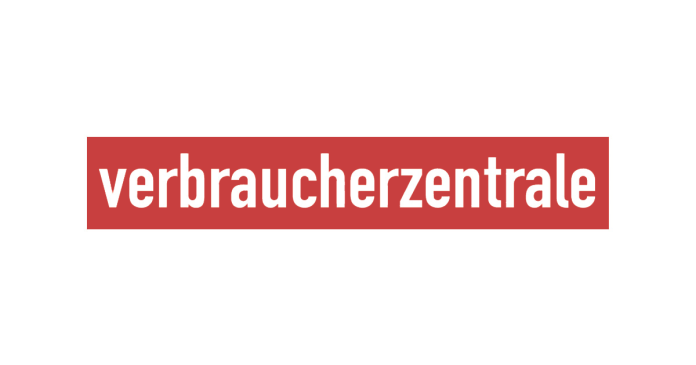Interest rates have been rising again since July 2022. This makes saving more profitable and loans more expensive. How the interest rate turnaround came about and what it means for savers.
The most important thing in brief:
- Interest rates have risen since July 2022 because the central banks have steadily increased the key interest rate.
- The central banks' goal is low, stable inflation of two percent. That has now almost been achieved.
- Those who save benefit from higher interest rates. Savers receive higher interest on their balances in a fixed-term and current account than with a checking account and savings account.
- However, anyone who takes out a loan has to accept higher financing costs. Particular attention is required when it comes to the interest rate for the overdraft facility.
Interest rates were low for a long time. That had advantages and disadvantages. For example, anyone who wanted to take out a loan to buy a property only paid low interest rates. Anyone who wanted to save money received hardly any interest on their reserves in call money, fixed-term deposits or other savings accounts. That has now changed as interest rates have risen in recent months. The term interest rate turnaround is now often used in this context. However, what exactly is behind this may require explanation for many consumers.
What is the interest rate turnaround?
The interest rate turnaround refers to the decisions of the central banks, which are responsible for monetary policy. This is why the central banks are often referred to as “currency guardians” in the media. At regular meetings they decide whether the key interest rate for the euro should rise or fall. In the euro area, the European Central Bank, or ECB for short, is responsible for this. For many years, from 2016 to 2022, the ECB left the key interest rate at 0 percent. That changed on July 21, 2022: After the ECB Governing Council meeting that day, ECB President Christine Lagarde announced an interest rate increase of 0.5 percentage points. Since interest rates had previously been at 0.0 percent for six years, the decision on July 21, 2022 initiated the so-called interest rate turnaround. In the following meetings, the ECB Governing Council gradually decided on further increases in key interest rates. At the council meeting on September 14, 2023, the ECB raised the key interest rate to 4.5 percent. The increase has been in effect since September 20th.
What is the European Central Bank (ECB)?
A central bank is responsible for the stability of a country's currency. This is a monetary policy task that essentially involves controlling how much money is in circulation (money supply) in order to keep prices stable. Central banks can also have other political tasks. However, central banks are not commercial banks. Private individuals or companies cannot open accounts or apply for loans there.
One of the most important means available to a central bank to stabilize the monetary value of a currency is to adjust interest rates. Interest is also considered the “price of money” or “cost of money.”
For countries whose currency is the euro, the European Central Bank (ECB) sets the key interest rate at its council meetings. The Governing Council of the ECB consists of six senior members of the ECB and the presidents of the national central banks of the euro countries. The Governing Council of the ECB makes all of the ECB's important monetary policy decisions, including interest rate decisions. The Governing Council meets several times a year. He decides to leave the key interest rate unchanged, lower it or increase it – depending on whether prices are stable or the money is currently too expensive (deflation) or too cheap (inflation).
There is an important special feature: central banks should be politically independent. This applies to both the ECB and the central banks of the individual euro countries. Therefore, governments are not involved in the Governing Council's interest rate decisions.
Key interest rate, interest rate turnaround and savings
The central bank of a country or a monetary union such as the euro sets the key interest rate. Banks in a country can borrow money from the central bank or central bank at this key interest rate. To put it simply: If it is cheap (low key interest rates), then they will do this on a larger scale and in turn grant cheap loans. They put money into circulation. Because banks or other credit institutions can also park their money at the ECB in exchange for interest, the key interest rate mechanism works in a similar way. If parking brings little interest, they would rather invest their money elsewhere. They keep the money in circulation. The deposit interest rate is currently 4 percent – so parking is attractive.
Like banks, consumers are benefiting from the change in interest rates because interest rates on savings products are rising again. This primarily concerns daily money and fixed-term deposits. The best interest rates for three-year fixed-term deposits are currently just under 4 percent per year. There is also interest again on deposits in current account accounts. As a rule, these are lower than the interest on the fixed-term deposit account, but the money is available at any time.
According to a current study by Stiftung Warentest, some banks offer their customers daily money accounts with interest rates between 1 and 3 percent. The interest rates on checking accounts and savings accounts, on the other hand, are almost unchanged. Savers should therefore not park their money there permanently.
Lure offers
Some banks entice new customers with higher interest rates on daily money. Caution is advised here. You should ask yourself the following questions:
- The good interest offers are usually only valid for a short period of time. If the switch is very complicated and the long-term interest rates are comparable to your current account, you should carefully consider whether the effort is worth it.
- For some offers, you have to open another account at the bank in addition to the current account. Check carefully the conditions, costs and terms that the bank attaches to the lure offer.
- Statutory deposit insurance applies to deposits at a German bank. This means your savings are protected up to a certain amount. Therefore, make sure that the bank is based in Germany and is covered by the German deposit protection scheme.
The change in interest rates also has a dark side: banks are also charging higher interest rates on loans. Many people have probably already heard that it has become more difficult to finance the purchase of a house or apartment with a loan. The same applies to installment loans and to loan interest that companies have to pay for their loans from banks. Anyone negotiating and taking out a new loan can compare interest rates from bank to bank. But the increased financing costs are not always obvious. For example, when using an overdraft on a current account, consumers should pay close attention to the amount of interest and consider whether they want to use the overdraft at that price – i.e. the overdraft interest rate.
What happens next and what inflation has to do with it
In the past few months, the inflation rate has fallen again: in February 2024, according to calculations by the Federal Statistical Office, it was 2.5 percent (compared to the same month of the previous year). This means that the central banks are once again approaching their inflation target: an inflation rate of 2 percent is politically desirable. Experts therefore assume that interest rates will not rise much further in the long term.
The inflation target of 2 percent also means that cash is constantly losing value – unless it is in an account with interest that corresponds to the inflation rate. Ideally, the interest rate on a savings account is at least 2 percent, ideally even slightly higher.


